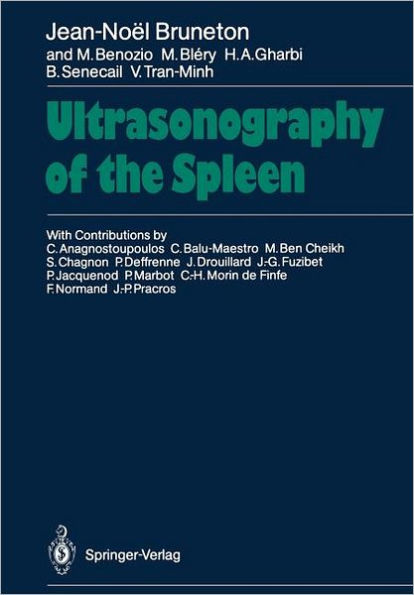Ultrasonography of the Spleen
This is the first book devoted solely to ultrasonography of the spleen. Its particular value to the reader can be explained by several factors: firstly, ultrasonography is the first examination to be performed after physical examination; secondly, splenic ultrasound can be performed rapidly in emergency settings and in an infectious context; thirdly, it is a necessary procedure for epidemiological work in regions such as Africa, where parasitoses are endemic; and, finally, it is useful for the work-up of neoplasms. The book is divided into chapters covering normal sonoanatomy of the spleen, congenital malformations, splenic trauma, tumors, infections, and involvement in parasitoses. In all chapters, the advantages of ultrasound examination are compared with those of other imaging techniques, and the role of ultrasonography in strategies for splenic exploration is defined as a function of the clinical setting. The book thereby allows optimal utilization of ultrasonography based on a thorough understanding of splenic pathology.
1136778880
Ultrasonography of the Spleen
This is the first book devoted solely to ultrasonography of the spleen. Its particular value to the reader can be explained by several factors: firstly, ultrasonography is the first examination to be performed after physical examination; secondly, splenic ultrasound can be performed rapidly in emergency settings and in an infectious context; thirdly, it is a necessary procedure for epidemiological work in regions such as Africa, where parasitoses are endemic; and, finally, it is useful for the work-up of neoplasms. The book is divided into chapters covering normal sonoanatomy of the spleen, congenital malformations, splenic trauma, tumors, infections, and involvement in parasitoses. In all chapters, the advantages of ultrasound examination are compared with those of other imaging techniques, and the role of ultrasonography in strategies for splenic exploration is defined as a function of the clinical setting. The book thereby allows optimal utilization of ultrasonography based on a thorough understanding of splenic pathology.
54.99
In Stock
5
1

Ultrasonography of the Spleen
89
Ultrasonography of the Spleen
89Paperback(Softcover reprint of the original 1st ed. 1988)
$54.99
54.99
In Stock

Product Details
| ISBN-13: | 9783642732010 |
|---|---|
| Publisher: | Springer Berlin Heidelberg |
| Publication date: | 12/21/2011 |
| Edition description: | Softcover reprint of the original 1st ed. 1988 |
| Pages: | 89 |
| Product dimensions: | 6.69(w) x 9.61(h) x 0.01(d) |
From the B&N Reads Blog
